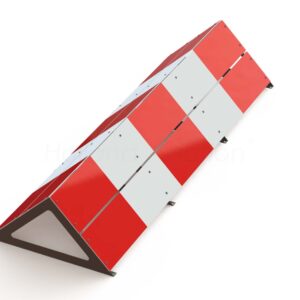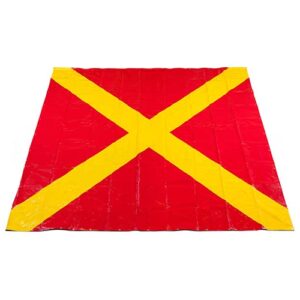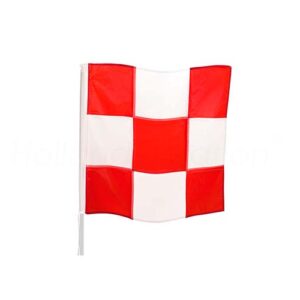Markers and signs
Holland Aviation markers and signs.
The marking of obstacles is intended to reduce hazards to an aircraft by indicating the presence of the obstacles.
Flags used to mark objects shall be displayed around, on top of, or around the highest edge of the object.
Flags shall not increase the hazard presented by the object they mark.
Markers and signs are essential in aviation to ensure safety and clear communication. In busy environments like airports and helidecks, they help indicate safe routes, mark obstacles, and show restricted areas. These visual tools reduce the risk of accidents and help operations run smoothly.
One important use of markers in aviation is for identifying obstacles. Obstruction flags and signs make potential hazards, like construction zones or parked vehicles, visible to pilots and ground staff. With their bright colors, like red and white, they are easy to spot, even in poor weather. This increases visibility and helps prevent collisions.
Prohibited landing markers are also crucial for helicopter operations. They clearly indicate where landing is not allowed, such as during maintenance or for safety reasons. These markers prevent helicopters from landing in dangerous areas, protecting both the aircraft and ground personnel.
Boundary markers are equally important for defining landing zones on airfields and helipads. They give pilots clear information about where the safe area is for landing and takeoff. These markers help organize space and improve safety during aviation operations.
Overall, markers and signs play a vital role in keeping aviation environments safe and well-organized. They ensure pilots and ground crews are aware of potential hazards and follow international safety standards.
One important use of markers in aviation is for identifying obstacles. Obstruction flags and signs make potential hazards, like construction zones or parked vehicles, visible to pilots and ground staff. With their bright colors, like red and white, they are easy to spot, even in poor weather. This increases visibility and helps prevent collisions.
Prohibited landing markers are also crucial for helicopter operations. They clearly indicate where landing is not allowed, such as during maintenance or for safety reasons. These markers prevent helicopters from landing in dangerous areas, protecting both the aircraft and ground personnel.
Boundary markers are equally important for defining landing zones on airfields and helipads. They give pilots clear information about where the safe area is for landing and takeoff. These markers help organize space and improve safety during aviation operations.
Overall, markers and signs play a vital role in keeping aviation environments safe and well-organized. They ensure pilots and ground crews are aware of potential hazards and follow international safety standards.



